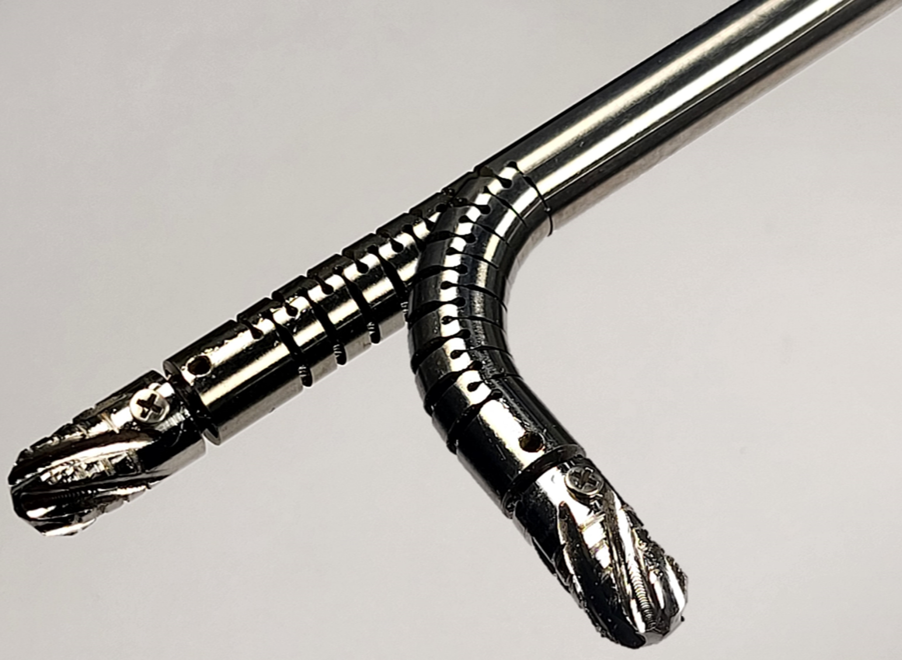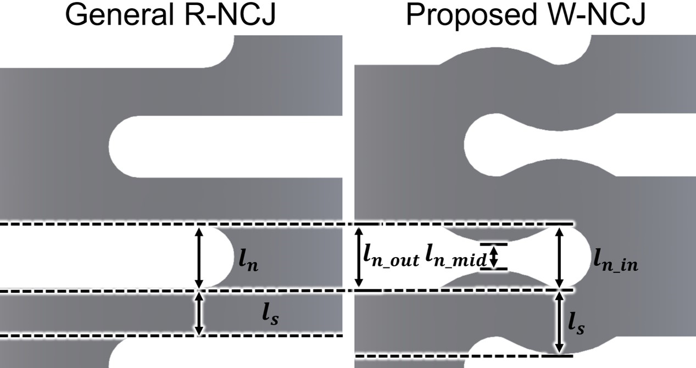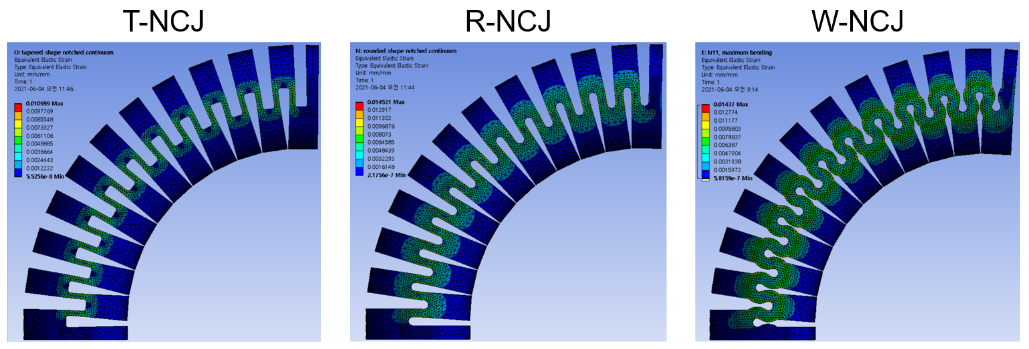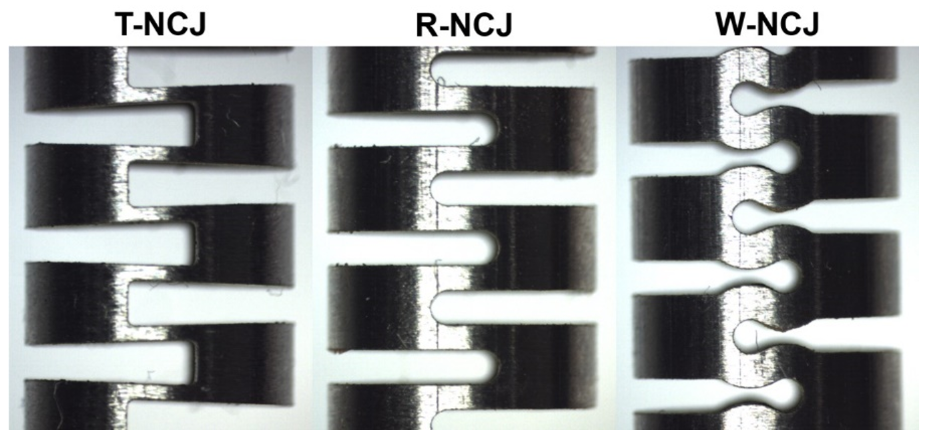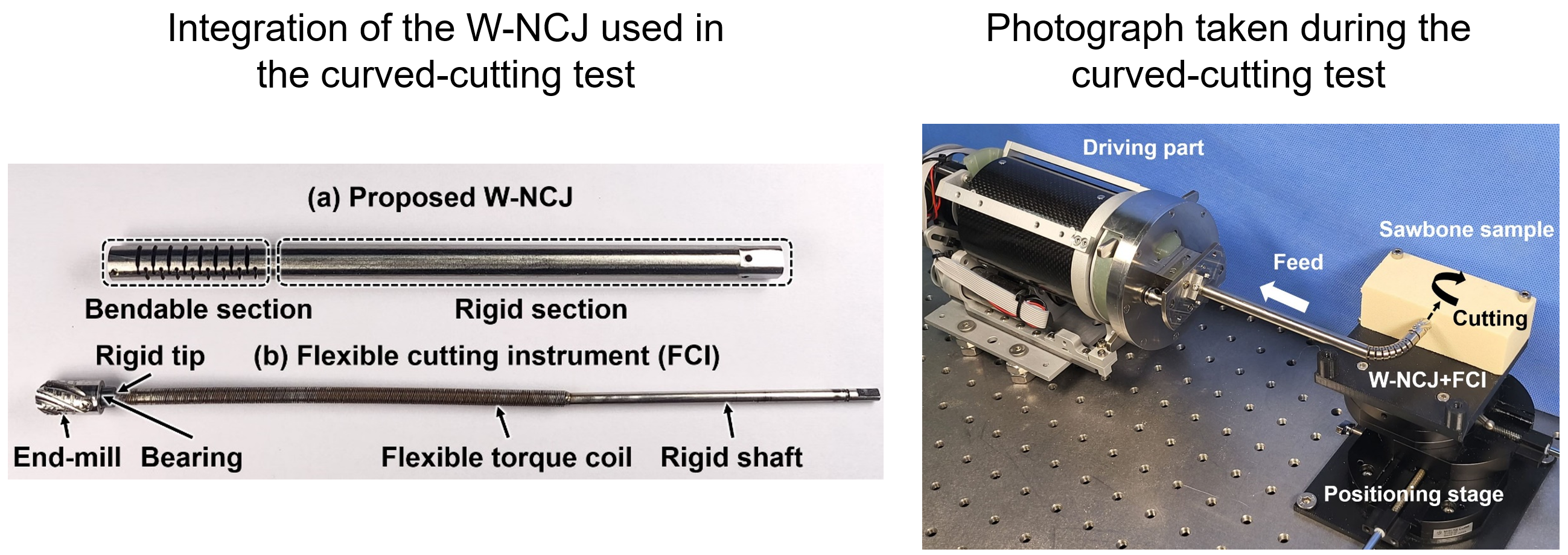Wave-shaped Notched Compliant Joint with High Rigidity
We proposed a notched compliant joint using a wave-shaped notch to maximize the rigidity while maintaining a large curvature.
Using this joint, the cutting performance for lesion around hard tissues can be improved, including the minimally invasive approaching performance.
Researchers
Seunguk Kim
Papers
Wave-Shape Notched Compliant Joint with High Rigidity
Kim S, Shim S, Ji D, Hong J
Proceeding of Hamlyn Symposium on Medical Robotics 2019, 2019
Fundings
The Ministry of Trade Industry & Energy (MOTIE, Korea), Ministry of Science & ICT (MSIT, Korea), and Ministry of Health & Welfare (MOHW, Korea) under Technology Development Program for AI-Bio-Robot-Medicine Convergence (20001688).
Design of proposed W-NCJ and comparison with a general R-NCJ
● Unlike the R-NCJ with only ?_? and ?_?, in the W-NCJ, ?_? can be divided into the heights of the outer (?_(?_???)), middle (?_(?_???)), and inner parts of the notch (?_(?_??)).
● As ?_(?_???) decreases, both ?_? and ?_(?_??) can increase, deviating from the inversely proportional relationship in general NCJs.
● Therefore, the W-NCJ can enhance both the rigidity and a curvature simultaneously.
Geometric relationship between design parameters

● Outline of the wave-shaped notch can be designed using two concentric circles tangent to each other.
● By cutting the nitinol tube following this outline, a single W-NCJ can be fabricated.
● Multiple W-NCJs was fabricated by connecting several of single W-NCJs in series.
Rigidity simulation and results
● We evaluated the moment capacities as an index of the rigidity and compared them with those of general NCJs by using ANSYS software.
● The proposed W-NCJ had 89% larger moment capacity than the R-NCJ at the same maximum curvature.
Rigidity experiment and results
● We fabricated the W-NCJ, R-NCJ, and T-NCJ to compare the rigidity in an experiment.
Rigidity experiment and results
● For three different bending positions (30°, 60°, and 90°), and two directions of the applied force (forward and inverse to the direction of bending), displacements were calculated for applied forces in the range from 0–5 ?.
● For the application of the force in the forward and inverse bending direction, the proposed W-NCJ achieves smaller displacement at three different bending positions compared with the R-NCJ.
Curved-cutting test
● A curved-cutting test which is cutting while maintaining the curvature was performed to show the usefulness of the proposed W-NCJ.
● The cutting amounts of the proposed W-NCJ increased at three different bending positions compared with the R-NCJ.
Conclusion
● We developed a notched compliant joint with a novel notch shape.
● To maximize the rigidity of the notched compliant joint and achieve a large curvature, a wave-shaped notch and a spacer with a large thickness were used.
● Since the main contribution of the proposed W-NCJ is the independent control of ?_(?_??) and ?_?, the curvature can be maximized while maintaining the high rigidity.
● In future, the proposed W-NCJ could be used for neurosurgeries and microsurgeries in which a surgical instrument with a large curvature is required, and for orthopedic surgeries in which a surgical instrument with high rigidity is required.

